6 Actionable Ways to Overcome Writer’s Block Now

When you think of a creative block, what comes to mind? Maybe a writer who is agonizing over finishing that one great novel. Or an artist drinking themselves to death as they struggle for inspiration. It is quite the dramatic image. And legends of the great creative forces of our time and their inevitable breakdowns tend to reinforce those ideas.
But guess what? Everyone has to deal with creative blocks sometimes, and I do mean everyone. Not just the tortured souls that create the masterpieces of the world, but every single person living on this planet.
Creativity is a key element of most of our lives. You might have a presentation to give at work, or you have to brainstorm ideas for decorating that spare bedroom in your house. You may be working on a team and having trouble contributing to the number of ideas that the others are, leaving you feeling useless and unhelpful.
High stress, emotional pain, personal problems, mental fatigue, incompatible work processes and more can contribute to creative blocks. Which may end up taking a serious toll on your life and productivity, leaving you drained. First, check out previous content inspiration articles we did on Curatti:
-
How To Never Run Out Of Content Ideas by Mark Traphagen
-
How to Come Up With Ideas for Evergreen Content by Anna Rud
-
How to Play Around With Google Suggest to Come Up with Content Ideas by Ann Smarty
-
7 Practical Ideas to Revitalize Your Content and Improve Blog Performance by Irina Weber
Now, here are a few more ways that can help you break through to the other side.
1. Accept Limitations: Use The Time Blocking Productivity Method
1.1 Accept Your Limitations
You probably have a lot of things you want to get done in a day, and you have planned accordingly. But having too much packed into a day can drain your energy, leaving you struggling to focus. Whatever good intentions you might have, your plans could be seriously impacting your ability to be creative.
To get past this problem you have to accept your limitations. Time is not your only factor; you also need to be able to relax and let your mind unwind a bit. So try to cut some things out of your schedule when possible. Don’t be too rigid with what you say you will do, even if it does feel counter-productive.
1.2 Time Blocking
By far the most effective way to plan my time effectively has been the time blocking method, i.e. scheduling tasks to the certain time slots during the day. Here’s the gist of it:
- I identify three (not more) proactive tasks a day (i.e. action items that need to be done tomorrow. For example, writing an article, following up on the recent outreach, creating a content marketing report)
- I plan them into the certain time slots without using the actual time (oh I wish I were that organized to actually stick to an exact time). For example:
- Before lunch: writing an article,
- Right after lunch: following up on the recent outreach,
- Right after a 30-minute walk outside: creating a content marketing report
- I also keep reactive blocks in mind, i.e. tasks you cannot plan but will happen either way. These include client calls and answering emails. I try to handle these at the very start of the day or before going to bed eliminating the clutter. (Those reactive tasks are the major productivity roadblocks, so try to move them aside as much as you can.)
I use Zenkit’s “Kanban” view to quickly put my daily proactive tasks and mark them as done:
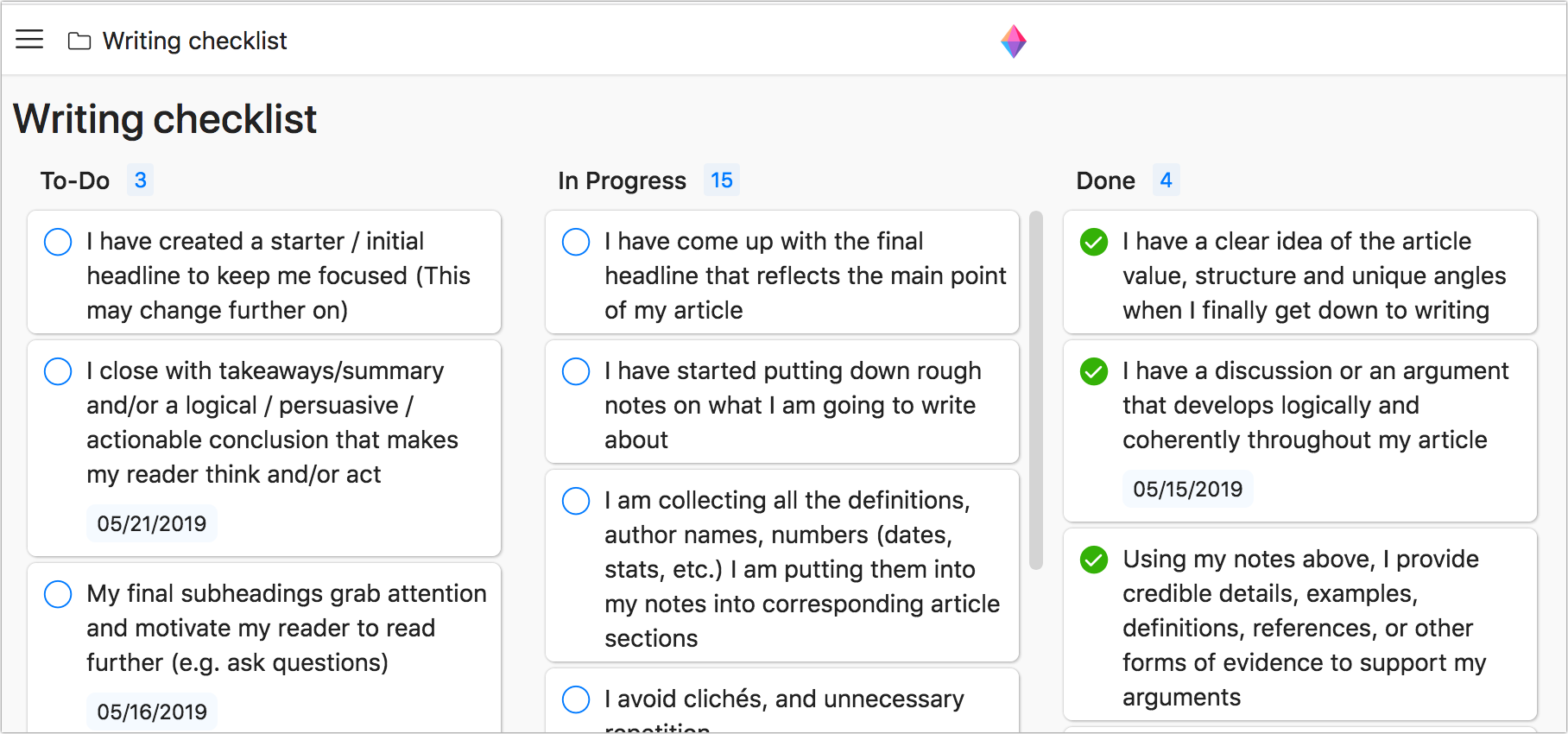
There many more productivity tools to choose from, so browse around before you take your pick.
2. Create Your Own Inspiration Toolbox
When I am feeling blocked, I love to settle down with a good book or watch a movie. These things are full of creative inspiration. They jump start my brain and give me ideas that I can work from to create my own. This works every time I am failing to meet my creative milestones, and I have done some of my best work after seeing what someone else has made.
Everyone has something else that inspires them. Maybe it is music or nature. Perhaps it is discussing ideas with someone else. Whatever the case, you should regularly seek out ideas from outside your own head.
Another way that helps me get discovered is to use one of my keyword research tools. One of the most recently discovered ones is Text Optimizer which is a semantic analysis tool that helps you discover new content ideas as well as identify related concepts and terms to build content around.
You may find some great ideas by simply playing with the tool. When I am stuck, I usually start at its “Content ideas” section where you can grab an interesting question to cover:
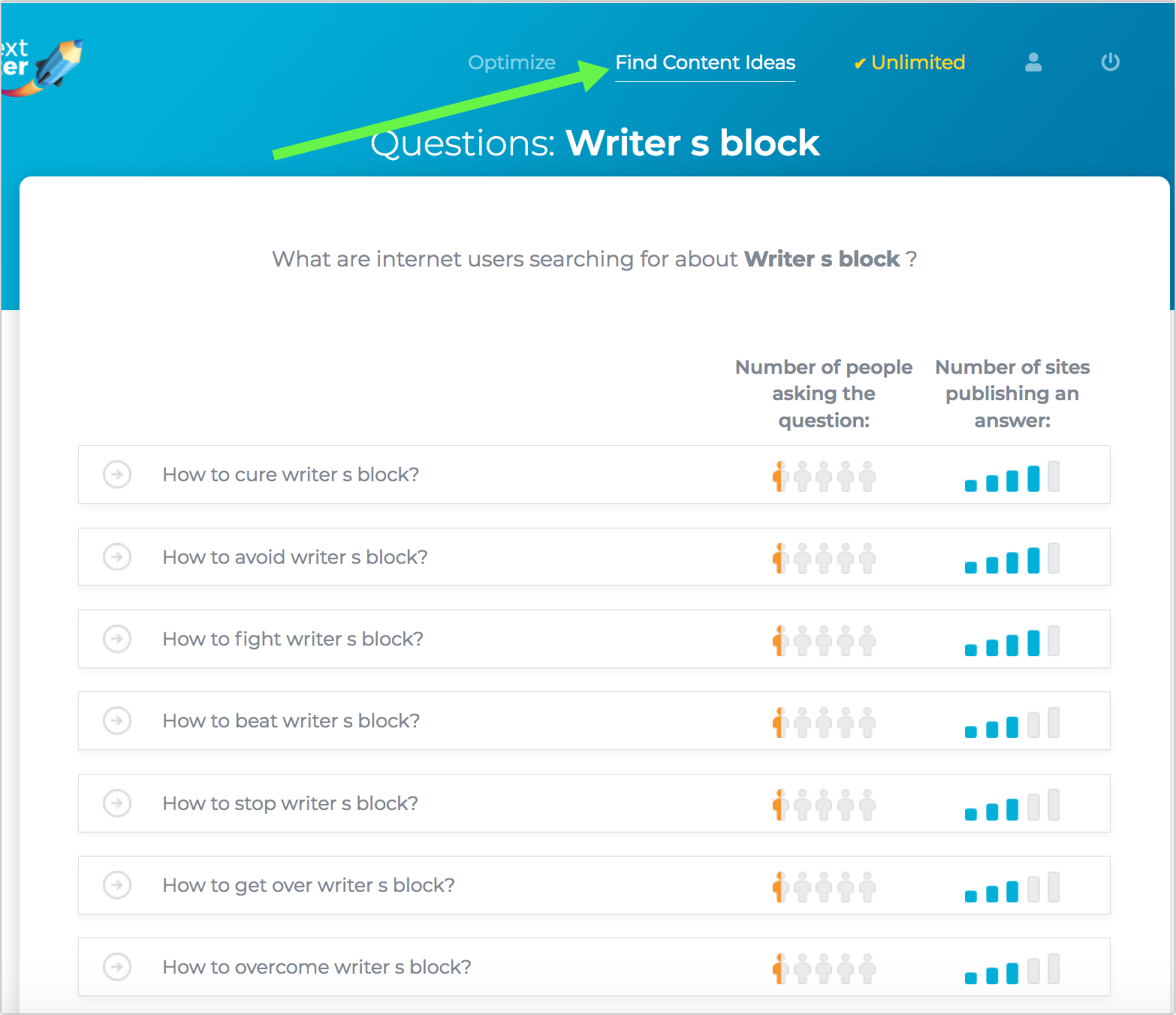
Once you have found a nice content idea, proceed to the “Optimize” section to let the tool grab Google’s search snippets and run semantic analysis to identify related concepts to cover in your article:

These two exercises never fail to spark my creativity and I usually find myself typing right away.
There may be more resources and approaches that can help you get inspired based on your goals and creative process. When it comes to inspiration, the more methods the better because one single tool will ultimately stop working for you, so you need to build your own toolbox.
3. Just Do It
Sometimes your creative block is not caused by external forces, but internal. When you are dreading sitting down and getting to work, you are more likely to avoid it. This can feel like a block, but it is really just your own desire for procrastination. When what you have to do seems overwhelming, it can take an emotional toll on you.
If you are finding it hard to get yourself to sit down and actually work, then force yourself to do so. Beating your mind into submission can be incredibly helpful, and once you are done it can feel quite therapeutic.
There are lots of ways to force yourself to get focused, one that mostly works for me is using this breathing exercise:
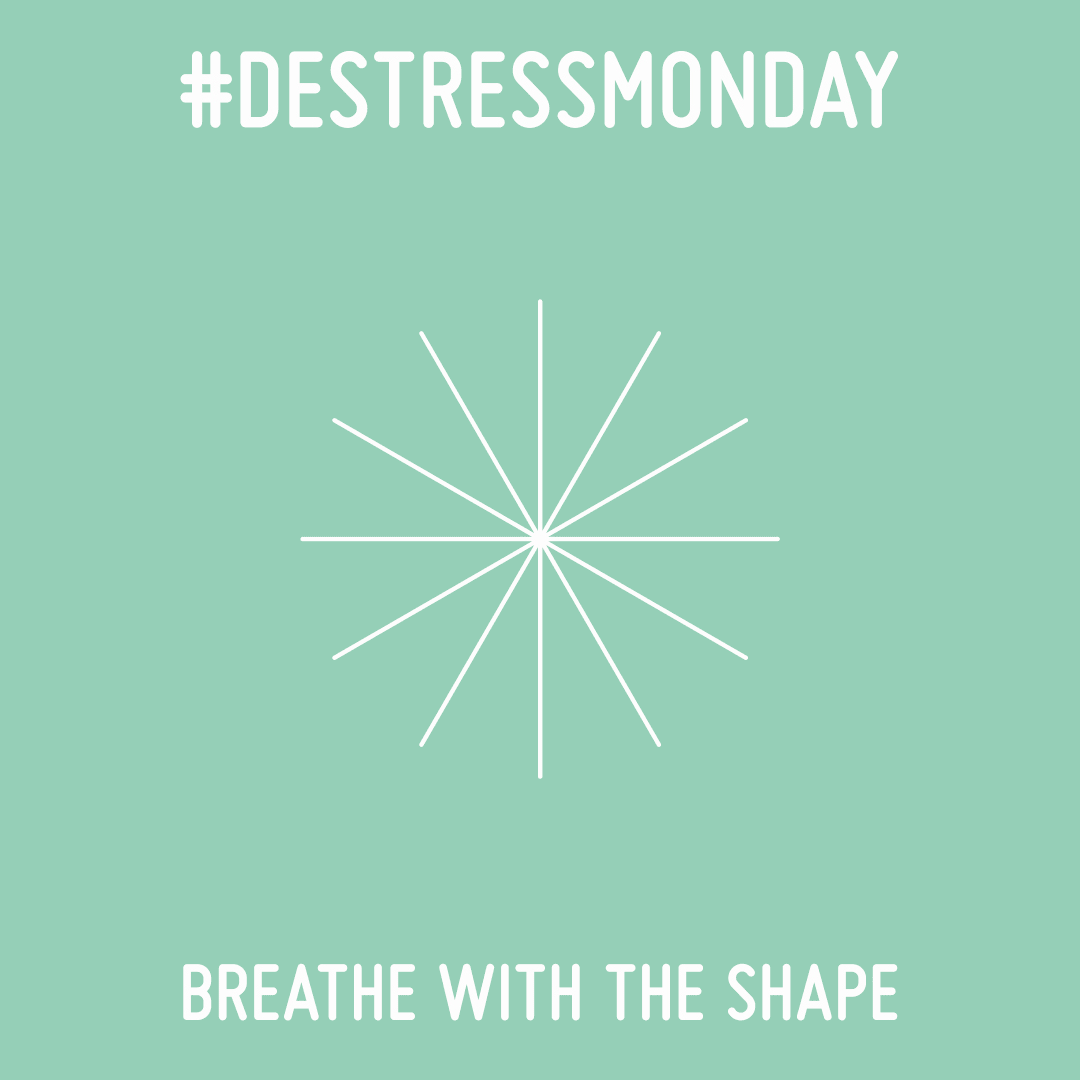
[Just breathe with the shape until you feel like working again!]
But there are many more ways to get rid of unwanted thoughts and focus that may work better for you.
4. Set up Collaborative Routines
Collaboration is the best way for a writer or content marketer to get inspired again. Sometimes when nothing else seems to be working and I still feel stressed, just talking to a friend makes all the difference.
We are all busy people so reaching out to a friend is not always possible. But luckily there’s always an opportunity to pick up your co-workers’ brains, even if you are part of a remote team.
For some of my clients, especially if I provide content on a regular basis, I insist on setting up a collaborative marketing calendar for them to know what I am planning to do and for them to be able to contribute their thoughts on every topic or content idea.
This has always helped me get both organized and inspired, regardless of how boring the client’s niche seems to be. I use ContentCal to keep my clients and my team collaborating in the most natural way:
- I schedule content briefs for as many months ahead as we initially agreed on to work together
- The client’s team can see the scheduled content schedule whenever they are looking at the calendar. They can access the campaign’s brief and contribute their own thoughts and ideas
- Both my client’s and my teams can all contribute their social media updates to our calendar to support each planned content asset:
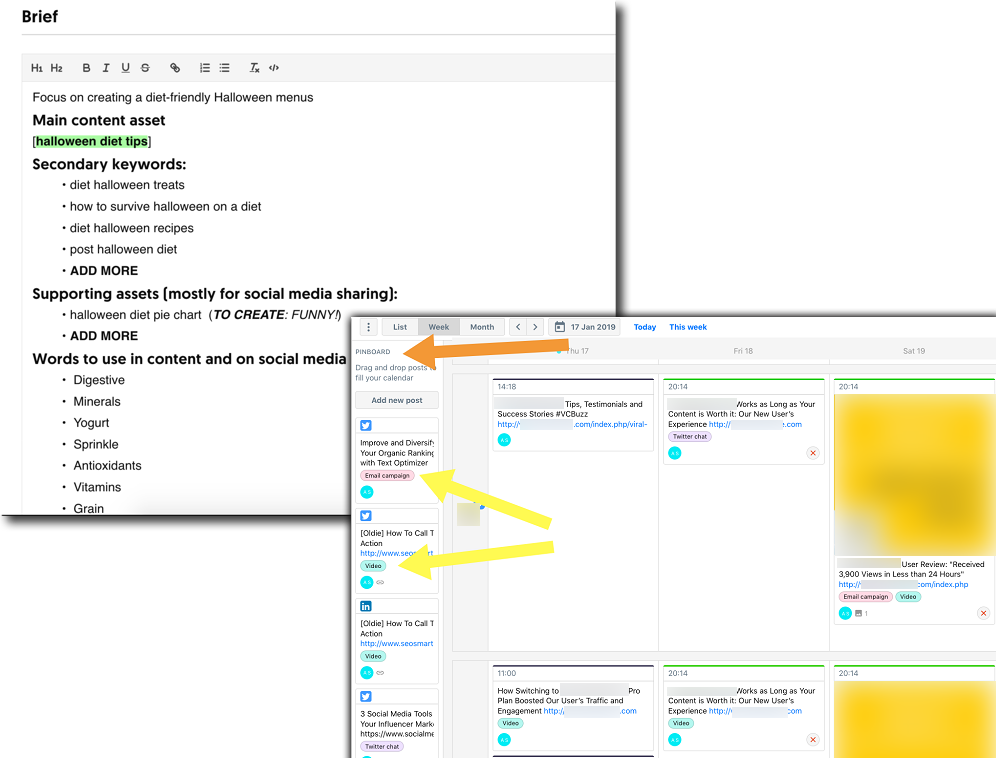
5. Create a Calming Environment
Stress is the killer of all things creative. Yes, emotional or psychological trauma can spark some incredible work. But being unable to concentrate on the task of completing it is not nearly so effective. So you should always have a place to go without distractions, where you can make an environment best suited to your needs.
For example, when I have work to do I will go into a room where no one can bother me. I turn off my phone and turn on some music that best fits the mood of the work I am doing at the moment. I always have a cup of black coffee beside me, and I make sure my chair is comfortable. Without fail, this eliminates much of the stress that is holding me back.
This article gives a few really powerful tips on how to set up your workspace for maximum productivity. My favorite is this bit:
For each location, do only one type of work. Performing the same type of activities in the same location trains your brain to switch to a different working mode immediately.
6. Be Healthy
Did you notice that I have a 30-minute walk in-between my primary proactive tasks during the day? Walking helps me switch from one major task to another one while keeping me healthy.
It might sound cliche, but being physically healthy is important for your creativity. Your mind has to be free to roam, and you have to be able to focus at all times. Proper diet and regular exercise give you energy, keep you from falling ill and make you feel all the more positive in yourself. Which will ultimately help dictate how you work in all aspects of your life.
Besides, you can get some great ideas while you workout or just go for a walk.
Plus I always take my audiobook with me when I am walking which helps me de-stress and get inspired again. If you like the idea, here’s a niche book to start called “Creative mind” and there are many more audiobooks to choose from, available for free at Youtube:
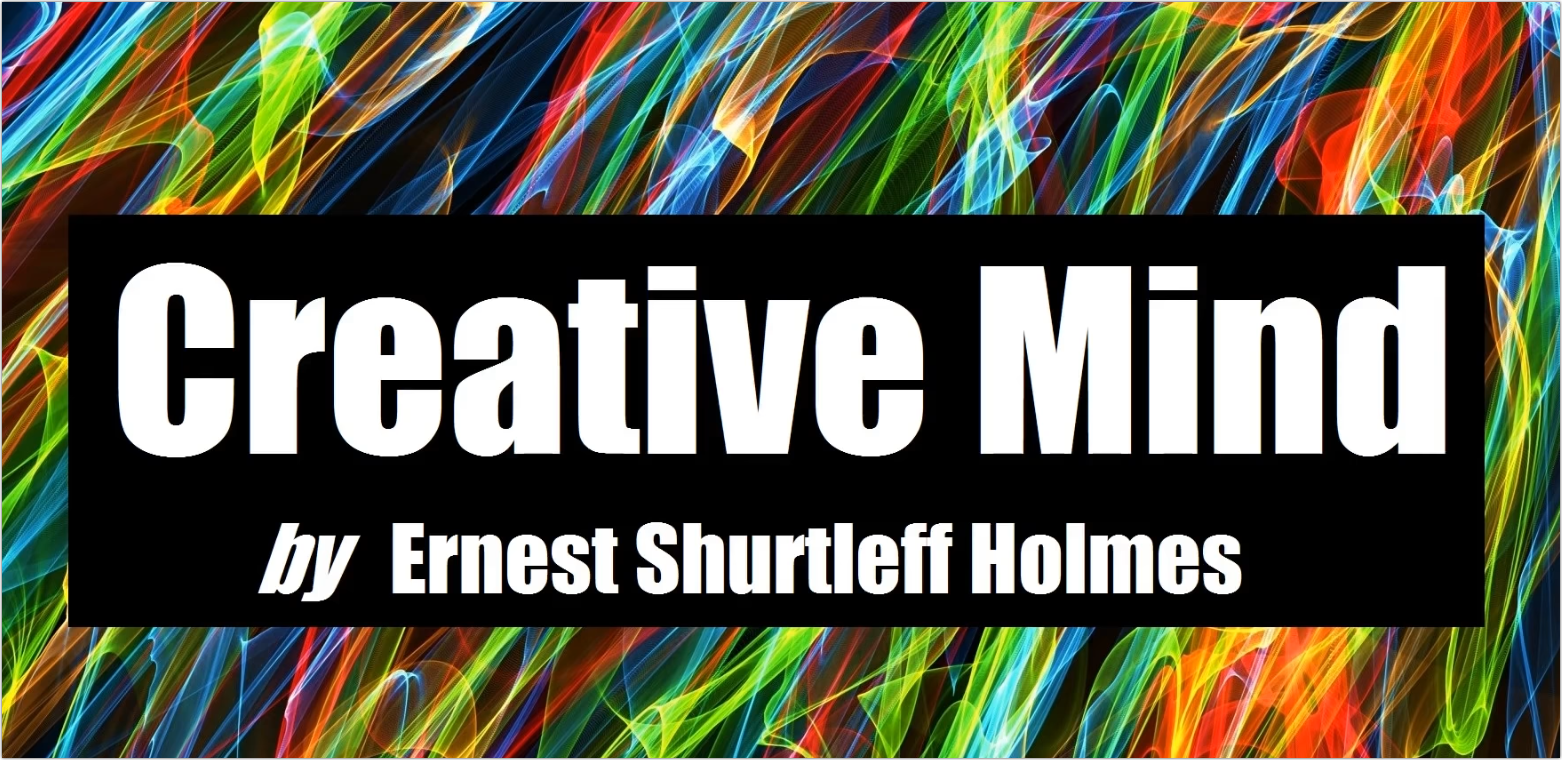
Conclusion
Everybody suffers from creative blocks every once in a while. Some of us suffer from them more often than others, because of the creative nature of our everyday work. But you can beat these blocks and come out with something incredible for your efforts. It just takes a little bit of preparation and dedication to do it.
Do you have tips on fighting creative blocks? Let us know in the comments.
Copyright: ‘https://www.123rf.com/profile_fizkes‘ / 123RF Stock Photo
Latest posts by Anna Fox (see all)
- How to Become a Better Freelance Writer by Managing Your Time Better - December 1, 2022
- All the Tools You Need for a Successful Link Building Campaign - September 13, 2022
- Don’t Waste Money: Six Ways To Maximize Your Content Marketing Budget - June 28, 2022

